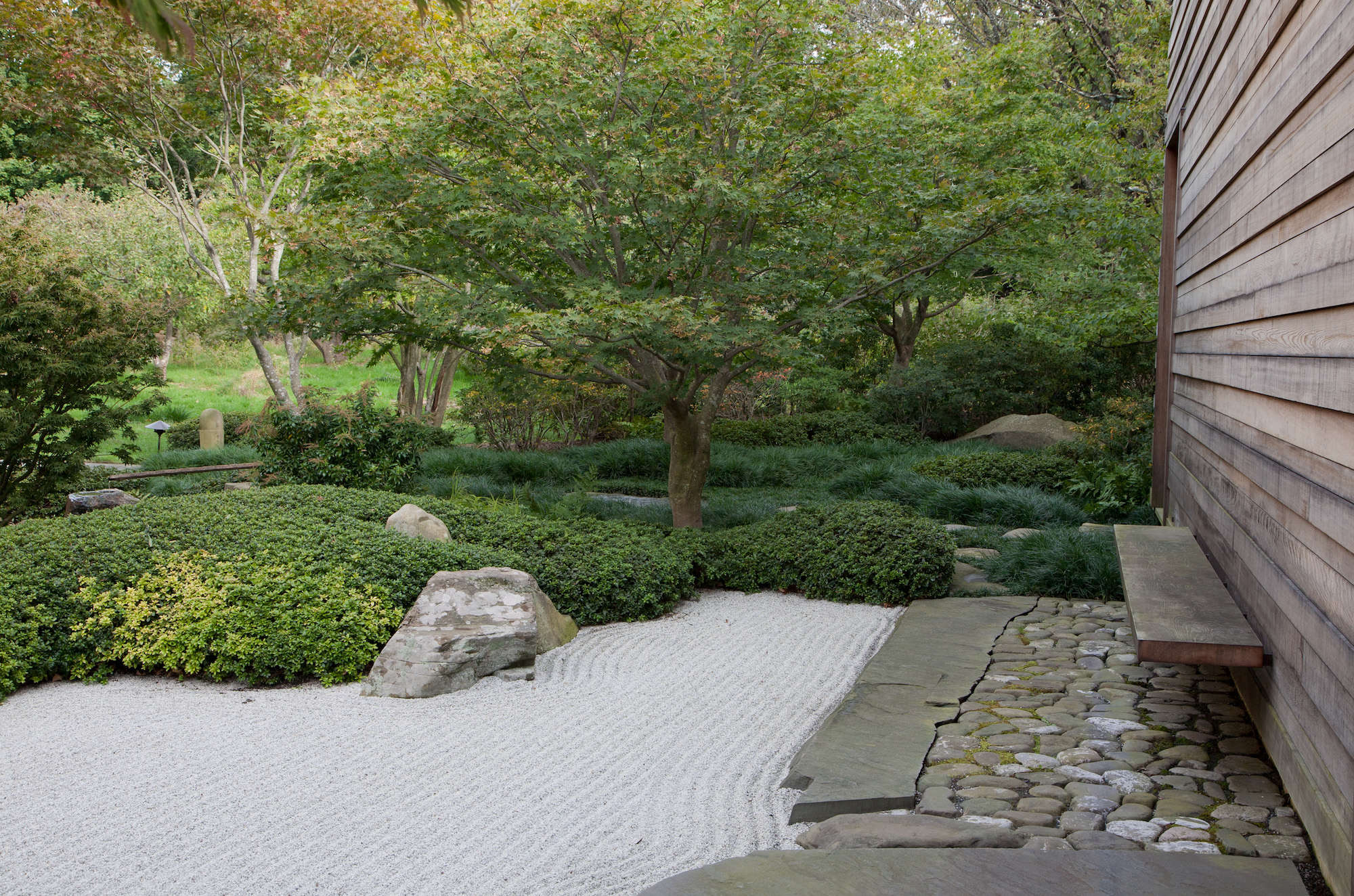When Peter Blum and his wife, Rita, had a modern house built in Irvington, New York, they hired a landscape architect to turn the existing grounds into an informal meadow landscape. But they saved one large patch of construction dirt for a different designer—Marc Peter Keane, a specialist in Japanese gardens.
“Peter and Rita are Swiss and they have very exacting eyes,” said Keane. “They like simple things, and they like Japan.” They wanted a Japanese-inspired garden in an empty space between their main house and a detached backyard office belonging to Peter, who owns Peter Blum Gallery in New York.
The garden was to serve two purposes—first, to transport people from the house to the studio, and second, to inspire contemplation—so Keane designed the garden in two parts. One section, the forest walk, is “a distillation of a forest path with a trail of irregular slabs and “is meant to be a bit difficult to walk on—to slow you down,” said Keane. The other side, the ocean garden, is meant for viewing at a distance: an ocean of white sand with carefully manicured islands and coastlines within.
Photography by and courtesy of Don Freeman.

The tree at far left is a star magnolia. On the terrace is a stone lingam installed by the homeowner; it’s a common sculptural image in Hindu temples.

For the forest walk, Keane took inspiration from a traditional Japanese tea garden. Walking through it “becomes a cleansing, purifying passage,” he said. “The very short distance between the house and the office begins to feel a little bit longer.”

Bluestone sometimes splits in curves, notes Keane, and he selected two curved pieces for this garden: one shown here, with a “river” of mondo grass flowing beneath it, and another framing the water basin, shown below.

Keane got his start in Japanese garden design when he moved to Japan in the 1980s with the intention of staying for one year. He lived there for 20 years, studying Japanese gardens and eventually designing for Japanese clients.

Directly behind the basin is a compact Japanese maple tree, and behind the water source is a Japanese andromeda with an autumn fern in front. The pale green grass at far right is golden Japanese forest grass, Hakonechloa macra ‘Aureola.’









A Japanese-inspired fence borders the garden on one side; solid cypress planks abut the bamboo grove, and a lattice pattern of vertical struts comprises the sides. It’s a nice effect, says Keane, “to layer the manmade fence against the natural bamboo grove.”

See another of Keane’s gardens in Designer Visit: A Gray and Green Garden at Tiger Glen, and find more Japanese inspiration in:
- Before & After: A Storybook Shed and Garden in Tokyo.
- Small Space DIY: Kokedama Planters.
- Hike of the Week: Akiko and Neil in Nara, Japan.












Have a Question or Comment About This Post?
Join the conversation (6)